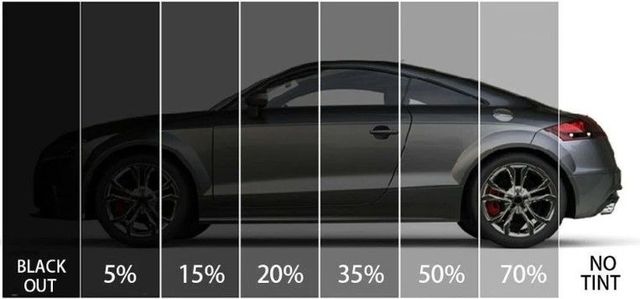Automobile Window Tinting for Heat Reduction and Energy Effectiveness
Automobile Window Tinting for Heat Reduction and Energy Effectiveness
Blog Article
Window Tinting Laws and Standards: What You Required to Know Before Tinting Your Car
Prior to continuing with window tinting for your car, it is necessary to acquaint yourself with the diverse regulations and standards that regulate this method throughout different states. These policies determine the permitted degrees of color darkness, frequently determined by visible light transmission (VLT) portions, and consist of particular terms for front windscreens aimed at making sure roadway safety.
Review of Home Window Tinting Rules
Home window tinting regulations are often based on variation throughout various territories, showing regional laws and safety factors to consider. These regulations dictate the acceptable degrees of color darkness and reflectiveness on automobile home windows, guaranteeing that drivers keep ample exposure while additionally safeguarding against damaging UV rays and warmth.
Most laws classify window tinting based on the Visible Light Transmission (VLT) percentage, which indicates the quantity of light that can pass via the window. Usually, lower VLT percents signify darker tints. Laws commonly distinguish between the front, side, and back windows, with more stringent restrictions used to the front windscreen to enhance safety and security for both the vehicle driver and various other road customers.
Furthermore, some territories impose restrictions on the reflectivity of the color, avoiding extreme glow that can harm exposure. Exemptions to these legislations might exist for individuals with details clinical conditions requiring added sunlight protection. Compliance with home window tinting policies is vital, as infractions can lead to penalties, compulsory elimination of the color, and prospective increases in insurance policy premiums. It is necessary for lorry proprietors to acquaint themselves with local regulations prior to continuing with window tinting installments.
State-by-State Tint Laws
Recognizing the certain window tinting policies in each state is important for automobile proprietors looking for to follow the regulation. Each state in the united state has actually developed its very own collection of regulations controling home window tinting, which can vary substantially. These policies usually dictate the allowed degrees of tint darkness, the kinds of windows that can be tinted, and any type of medical exemptions that might apply.
For example, states like The golden state have stringent restrictions on tint darkness for front windows, while others, such as New Mexico, might allow darker colors. Furthermore, specific states mandate specific presence percentages for different windows, including the windshield, front side windows, and back windows. It is crucial for automobile proprietors to familiarize themselves with their state's legislations to prevent prospective fines or charges.
Additionally, some states may require a qualification sticker label to be positioned on colored home windows, indicating compliance with state legislations. Failing to abide by these regulations not just risks legal repercussions however can likewise affect safety and security and visibility while driving. Consequently, lorry proprietors need to conduct complete research or get in touch with neighborhood authorities to ensure full understanding and compliance with state-by-state tint guidelines.
Allowed Tint Degrees and Types
Many automobile owners may be amazed to find out that allowed color degrees and kinds vary extensively across various states. Each state has developed its own regulations relating to the permissible darkness and reflectivity of home window tint, useful reference commonly gauged by Visible Light Transmission (VLT) percentages. VLT describes the amount of light that can pass with the colored home windows; therefore, a reduced percentage indicates a darker tint.

Furthermore, the kinds of tint products enabled can differ, with some states prohibiting metallic or mirror-like surfaces. It is essential for automobile proprietors this website to acquaint themselves with their state's details legislations to make certain compliance. Non-compliance can lead to fines, mandatory removal of the color, or various other legal repercussions, making it vital to comprehend these laws before waging installment.
Medical Exceptions for Tinting
While not all states offer allowances for clinical exemptions regarding home window tinting, those that do identify the need for details individuals to improve exposure and convenience because of clinical conditions. Various clinical problems, such as lupus, skin cancer, and certain eye conditions, can make people specifically conscious sunlight. These people might need darker tints to secure themselves from dangerous UV rays and glow.

It is important to keep in mind that despite a clinical exception, there might still be limitations on the degree of color allowed. Compliance with state laws makes sure that people are both secured and within lawful limits. Those considering clinical exemptions should contact their neighborhood Division of Motor Cars or comparable authority to comprehend the requirements and treatments necessary to request an exemption properly.
Charges for Non-Compliance
Failing to follow home window tinting laws can bring about considerable penalties, which differ by state. Legislation enforcement agencies are encouraged to issue citations for vehicles that do not comply with the specified tinting laws. These fines normally include penalties, which can range from moderate quantities to several hundred dollars, depending on the extent of the infraction and the state in inquiry.
In some jurisdictions, duplicated offenses might cause rising penalties or added charges, such as obligatory court appearances. Non-compliance might necessitate the removal of illegal tinting, often at the owner's expenditure. In severe situations, regular offenders might encounter suspension page of their automobile registration until compliance is achieved.
Furthermore, insurance policy implications may occur from receiving several citations for window color offenses. Insurers might view such infractions as an indicator of riskier habits, potentially resulting in boosted premiums or difficulty in coverage.
To stay clear of these penalties, it is critical for lorry proprietors to familiarize themselves with their neighborhood window tinting laws and ensure that their vehicle complies (Window Tinting). This aggressive approach not just stays clear of lawful ramifications but additionally promotes roadway safety
Verdict

A lot of policies categorize home window tinting based on the Visible Light Transmission (VLT) percent, which shows the quantity of light that can pass with the home window. Conformity with home window tinting policies is critical, as infractions can result in penalties, required elimination of the color, and possible rises in insurance premiums.Comprehending the particular window tinting laws in each state is essential for car proprietors seeking to comply with the regulation. These laws frequently determine the allowed degrees of tint darkness, the types of home windows that can be tinted, and any kind of clinical exceptions that may apply.
For circumstances, states like California have rigid constraints on color darkness for front windows, while others, such as New Mexico, might allow darker colors.
Report this page